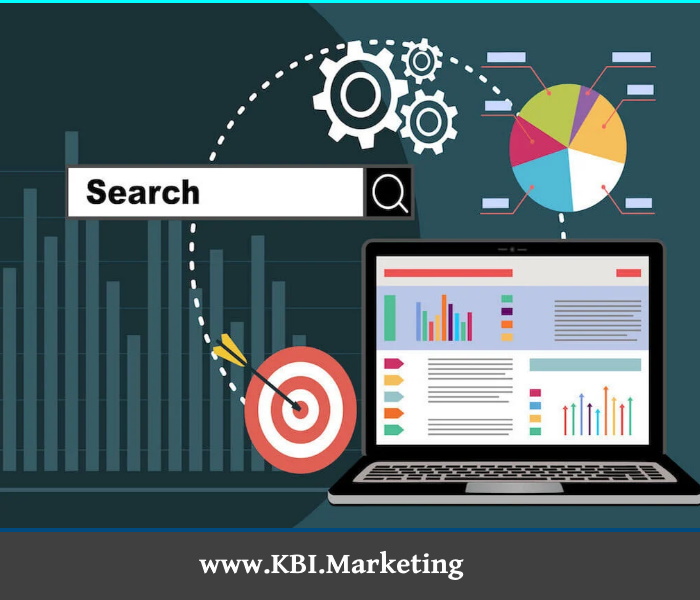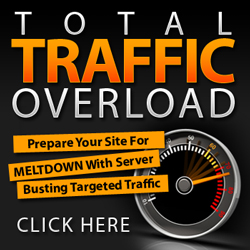There are several strategies and techniques you can follow to rank higher on Google, but if you don’t get the basics right, your chances of ranking on page 1 of Google are minimal.
Believe it or not, whether you’re taking over, improving, or just starting your SEO strategy, the basics of SEO aren’t that hard. In fact, they’re mostly just common sense. I’m not trying to take anything away from the rock stars who have made a career around SEO expertise. We need those folks. Their expertise is incredibly valuable because there is a lot of science to SEO, and it is constantly changing as search engines like Google continue to update their algorithms.
One huge benefit from SEO is that you’ll be able to improve the ranking of your website’s pages in search engine results pages like Google. If you don’t rank well in results pages, it’s highly unlikely that your target customers will find your website, let alone buy your products and services.
SEO can help get you to the top of search results which means more potential customers will see your website pages, visit your website, and purchase your products.
However, these results don’t happen overnight, and in order to see results, it’s recommended that you implement more than just one of the strategies mentioned below. In fact, some strategies go hand-in-hand, which means it’s difficult to have one without the other.
For example, if you implement multimedia on your website, you’ll also need to implement alt tags so that Google is able to read your multimedia. Another example would be if you implement an extensive content plan, you should also be sure to implement multimedia so that your content is engaging and interesting.
When you pair more than one SEO strategy together, you’re bound to see results for your business!
So, what exactly determines what appears in the number one position on a search engine results page? To answer that question, we’re going to assume that you’re using Google, since over 90% of the searches globally are done through this search engine.
Google’s search algorithm is what determines which website will be in the first position. Google continues to update its algorithm, optimizing it for the user’s experience (if you want to check out the full history of updates, MOZ has a great running list of algorithm updates). Organizations that play by the rules and focus on improving their SEO by following Google’s guidelines will improve their likelihood of being found by the right audiences – not just any searchers, but those who want the solutions you’re selling.
There will always be some tried-and-true components you need to work on when it comes to impacting your SEO. Luckily for us, SEMrush conducted research that identified what the factors are that determine search engine result page positions. Below are 17 of them, in order from most important to least important, that influence your SERP results:
- Direct website traffic
- Time on site
- Pages per session
- Bounce rate
- Total referring domains
- Total backlinks
- Total referring IPs
- Total follow-backlinks
- Content length
- Website security (HTTPS)
- Total anchors
- Keyword in anchor
- Keyword in body
- Keyword density
- Keyword in title
- Keyword in meta
- Video on page
Yes, there’s a lot to digest, which is why we’re going to take a look what each is and how to impact each with on-page or off-page SEO tactics.
Let’s first talk about how the SEO strategies we talk about can help your business succeed.
Check out these SEO techniques to to Double Your Organic Traffic:
1. Know Your Keywords
Table of Contents
First things first. You can’t do much without knowing what keywords your target market is using to find solutions to their problems that your company solves. This requires a little research. Step inside the shoes of the potential customer of your product or service. How would you find solutions to your problem? What would you search for in your search engine? For example, if you sell organic dog food, your potential customer is probably concerned about her dog’s health. Maybe her dog has food allergies and she’s concerned about the chemicals and byproduct in most dog foods. Start searching. What sites pop up?
2. Write High Quality Content (Naturally)
The key here is to use your marketing spidey sense and create engaging content that is valuable to your target market. Valuable content includes content that answers the questions that your buyers have, provides them with insights they can use, and educates them so they can be better at what they do. Within the great content you’re creating, remember to use appropriate keywords naturally. Don’t try to stuff your pages (i.e. adding keyword terms over and over again in your content, in your meta tags, in your Alt descriptions, etc) in an attempt inflate your site’s ranking. It won’t help your search ranking (in fact, it could hurt it). If search engines catch you (and they will because their bots are super smart!), they can penalize your site by lowering your ranking or completely removing your site from their index. Plus, it won’t impress your website visitors. Who wants to read the same words over and over: “Are you looking for organic dog food? If you’re looking for organic dog food, look no further. Our organic dog food website is the best place to order your organic dog food.” Keep it real—you’re writing for a person.
3. Use Keywords in Your Website Page URLs
Be sure you don’t overlook your page URLs because they’re important for your SEO. This is where your keyword research comes in handy. For example, if a page talks about your solar financing product, then the URL for that page should be products/solar-financing. Focus on the most common and most searched appropriate keywords. If you are trying to decide between “solar financing” and “solar leasing,” choose the one with the highest search ranking.
There are a couple quick and easy (and free) ways to check search ranking. One is to use Google AdWords Keyword Planner. Simply enter your keywords to get an idea of how popular they have been historically in terms of search volume. You can also use Google Trends, which is a truly fun site to explore. Compare different keywords to see a quick graphical comparison of interest over time.
4. Don’t Overlook Page Titles
It’s critical to create engaging and interesting titles for your web pages. Be sure they grab your target market. If they don’t, people are not going read all the great content below. I find that answering “What’s in it for me?” for my visitors helps me focus on what to highlight. Ask yourself: What’s the benefit they will get from the content on this page and why should they care? Once you have that nailed, shorten your title, use strong words, and make it sexy (try a little alliteration for fun). As you’re creating these attention-grabbing headlines, ensure your keyword is in the headline (the H1) and/or the subhead (the H2). Using the solar financing example above, your H1 might be “Solar Financing Made Easy.”
5. Review Every Page for Additional Keyword Placement
Now that you’ve created high quality content that your target market needs (and wants) and have attention-grabbing headlines to engage them and encourage them to read further, go back and review everything you wrote. In your review, look for additional places where you can naturally place keywords. Can you switch a sentence around to include a keyword? For example, on a page about marketing automation, “Identify the best customers and convert more” could be changed to “Marketing automation helps you identify the best customers and convert more.” Also, consider whether you can create a keyword phrase by adding a word in front of a keyword? If I have a sentence talking about “marketing campaigns” and “marketing automation” is a keyword for my page, I would add “automated” to “marketing campaigns.” Do several review passes. You may be surprised at what opportunities you miss the first, and even the second time, around.
6. Improve User Experience
This is beyond website content, but good user experience is becoming more and more important in strong SEO rankings. According to Robert Berris in his blog Three UX Principles That Help Your Website Do Its Job Right, “During the last two years, Google has evolved to place much higher emphasis on sites that deliver quality user experiences across platforms and devices. Though traditional ranking factors are still king, search engine optimization is increasingly becoming user optimization.” So, work with your web developers to be sure that your website is easy and intuitive to navigate and that each link works and takes your visitors to the next bit of information they’re looking for.
7. Strategies to Optimize Your On-Page SEO
Before implementing an on-page SEO strategy, you’ll need to conduct keyword research to ensure you’re going after the keywords that will be the most impactful to your business.
Keyword Research
Since Google’s Hummingbird update in 2013, the role of keywords in SEO has been reduced. Google no longer values individual sets of keywords entered in the metadata. Instead, the search engine places an emphasis on the content of each page.
Page titles and page descriptions are still important to Google, only because Google wants its searchers to have the best user experience. Instead of writing page titles and descriptions to cater to Google, write your page descriptions and page titles for the user. Google’s algorithm reads pages similar to how an actual person reads, and will penalize pages for keyword stuffing and awkward writing just to fit keywords in. You want to be descriptive and honest, but you still need to stand out.
The next step is to investigate how your website or blog ranks for specific keywords in the SERP for that particular search query. This technique will help clarify which keywords need to be targeted to rise in the page rankings. Using Google, it’s important to be logged out of any Google account when looking for the accurate SERP or if you are using Chrome you can use the incognito mode. When a Google user is logged in, SERPs change to reflect his or her past searches.
Another step to take is to make sure you have 301 redirects in place so you don’t receive 404 errors from any URLs that may no longer be in use. By using the 301 redirect, you redirect a majority of that link’s authority to the new one. It’s basically telling Google that the new link is replacing the old one.
These tips are the beginning of a keyword research strategy. By continuing to tune and adjust to new information, you’ll build a more targeted collection of keywords that will grow and shape your SEO strategy.
Keywords should still have a role in your SEO work, specifically for the on-page copy of your website. Unfortunately, Google has made keyword search data unavailable to users, making it more difficult to understand what people are searching; Google also eliminated its free Keyword Tool. But do not fear, there are other tools you can use to develop your keyword strategy.
8. Content Creation
The ultimate best practice in SEO today is strong content creation. Regardless of the impact of off-page techniques like consistent link-building and keyword maintenance, all search algorithms look for a foundation of high-quality, relevant content users can use to answer their questions.
Content aimed at optimization should follow four key principles:
- Content is always important. Fresh content (i.e., text, video, images) on a website and blog encourages search engines to visit more frequently, increasing the number of website pages that become indexed. Each indexed page is then an opportunity for your target to find your site when conducting a search.
- When businesses produce fresh content frequently, search performance accelerates quickly. New blog articles, page content, landing pages, videos, etc., all draw the search engine’s attention, telling it that, “Hey, this site has great, fresh info related to this search!”
- The best way for a website to gain organic, non-paid links is by creating quality content that people want to reference and link to. Blogs are a format that many users find valuable, as are strong landing pages, downloadable content offers, and multimedia. These type of natural, “earned links” improve the site’s credibility with Google.
- Websites are meant to convert traffic into leads and leads into new business, and advanced content can be the ticket to capturing those leads. By requiring users to complete a form in exchange for content, businesses can also learn what those leads’ needs and challenges are, and get good, qualitative data about their content’s strengths and weaknesses. Lead conversion may be aimed at the eventual sale, but it can also serve marketers’ SEO needs.
Accelerating Improvements in Website Performance
Once they’ve established a content strategy, companies usually see a significant improvement in optimization and traffic. One of the key ways to ensure on-page content impacts SEO is to ensure that the website’s speed keeps up with the rest of the world’s fast pace.
Web users have become accustomed to web pages loading quickly. If pages don’t, people move on. Google understands this, so when its crawlers get held up dissecting a website’s content because of sluggish page load speed, search rank will suffer.
There are five content optimization techniques that help boost a site’s load speed:
- Large, high-resolution images slow load time. Using the photo editor on your computer or a free tool such as compressimage.toolur.com, photos and custom graphics should be reduced to 72 PPI, with pixel dimensions set for the approximate size needed. Downsizing an image using a standard HTML editor will only change the appearance on the screen; the browser still has to load the full image, which can be 3x as large.
- Google AMP (accelerated mobile pages) is an open source initiative that improves mobile load times. This is meant to make it easy for mobile users ease to view multiple articles.
- An image’s file type can help decrease its file size and load time. Stick with compressed image file types like JPG, PNG, and GIF. Your web design should not include unnecessary graphic elements. There are times when it’s necessary to use a custom graphic to display stylized text (i.e., a logo, special header, or ads), but the more you leverage CSS for displaying specific fonts, the faster the page will load. Also, use the correct format for the specific use (JPEG for photos, PNG for graphics and SVG for logos).
- Never keep video footage in its original recorded format if it’s not optimized for the web. Even the simplest editing software, such as iMovie or Windows Movie Maker, can optimize video content effectively. Another option is to host it on a site like Wistia or YouTube. This option keeps your website loading quickly and stores the content on the host site.
- If you’re using a social video host (e.g., YouTube or Wistia), the options for SEO expand immensely. Starting up a YouTube account really means opening another content channel and social media hub — both require regular maintenance. Companies making that choice for the first time have to be sure to do the right kind of keyword research for YouTube optimization, carefully describing each video with keyword-rich tags, promoting the YouTube channel by actively promoting videos, and securing inbound links just like any other web page.
9. Hire an Expert
As we said earlier, basic SEO is mostly common sense. However, if you can afford it, it is wise to hire a SEO expert to ensure your site is truly optimized. A SEO consultant or agency can audit your site and look at how it is performing against your most important keywords. They will provide you with a prioritized list of action items to help you take your site to the next level.














